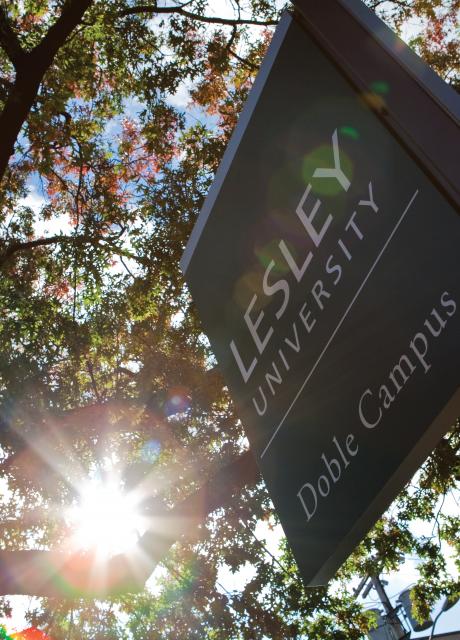Common Funding Mechanisms
Private Pay
This is the most common form of funding. If the student is attending a college-based transition program, then parents may use a 529 college savings plan, especially if the student is seeking a degree.
Only colleges and universities can receive funding from 529 savings plans. Check with the financial aid office at the universities you're considering to see if their transition program is allowed to participate in this source of funding.
President Obama signed into law the Able Act, which was modeled after the 529 savings plans. Able Act savings plans can be used for a wider array of programs and services, including community-based transition programs.
School District Funding
Under Part B of the Individuals with Disabilities Education Act (IDEA), school districts can pay for either community-based or college-based transition programs.
There are a few issues to consider if you're thinking about this approach:
- You must start this process at least one year in advance of your son or daughter attending the program, and you should retain an educational advocate. This means you may have to pay money up front for legal retainers or advocate fees, and private evaluations.
- Your child must not have accepted their high school diploma and had their exit Individualized Educational Program (IEP) meeting. If you accept the diploma, the school district is no longer responsible for educating your child. Otherwise, the school district is responsible for your child’s education through age 21.
- You, along with your advocate, must demonstrate how the local school district is unable to reach goals on your student's IEP.
Don't approach this process—in language or mind set—as a means to pay for college. Likewise, avoid using language that would suggest that your son or daughter is entitled to “the best." In fact, under IDEA, your son or daughter is entitled to a Free and Appropriate Public Education (FAPE).
Your advocate’s job is to demonstrate how the current school placement is not appropriate and doesn't meet the goals of the IEP. Typically, school districts have a difficult time reaching social skills, independent living, and vocational goals. If the transition plan goal of the IEP is to have your child transition to college, then make sure the interim steps are in place to ease that transition. Most school districts do not have the infrastructure or first-hand knowledge to complete these steps, even if they have an in-district transition program.
Federal Student Aid
The Higher Education Opportunities Act of 2008 created a process by which Institutions of Higher Education (colleges and universities) with a previously approved financial aid program (known as Title IV) were permitted to create Comprehensive Transition and Post-Secondary (CTP) programs for students with an Intellectual Disability (ID) and other significant cognitive impairments.
Once approved by the U.S. Department of Education, CTP programs may offer federal student aid to qualified students with ID. However, the bulk of federal student aid is available through subsidized and unsubsidized loans. Other federal aid is limited to Pell Grants, Federal Supplemental Educational Opportunity Grants, and Work-Study monies.
The New GI Bill®, The New GI Bill® 2.0 & The Yellow Ribbon Program
This is a potentially wonderful source of funding for active duty military service personnel, veterans, and their dependents.
Under the New GI Bill® and the New GI Bill® 2.0, military service personnel may transfer their unused educational benefits to their dependents. This is a straightforward process if the student is enrolled in a degree-seeking program. Work with your college or university’s financial aid office on getting the funding.
For those students in a college-based transition program that is eligible for full federal student aid because they offer a vocational certificate, they too may be eligible for funding through these bills.
Comprehensive Transition and Post-Secondary (CTP) programs are not eligible for funding under these bills and program.
The Yellow Ribbon Program is for eligible military personnel and their dependents who attend private colleges and universities. The rate of reimbursement under the New GI Bills® are set at public university rates and vary from state to state. The Yellow Ribbon Program helps offset the cost differential between the public university costs and the private university costs of attendance since private institutions tend to be more expensive than public ones.
*GI Bill® is a registered trademark of the U.S. Department of Veterans Affairs (VA). More information about education benefits offered by VA is available at the official U.S. government Web site at https://www.benefits.va.gov/gibill.
Scholarships
There may be monies that the college or university offers its own students. College-based transition programs may raise funds for their own scholarships, so speak directly with program staff about this possibility.
Most colleges and universities will require a family to complete the Free Application for Federal Student Aid (FAFSA) before considering a student for a scholarship, particularly if they're offering need-based awards.
You could also pursue private scholarships from external sources. This will take research on your part. You might find external scholarships that are need-based, merit-based, or based upon ethnicity, immigrant status, or can be disability specific.
As for any external funding, start the research and application process early. You're competing with many other families and the funds may be distributed on a first-come, first-served basis.
Tax Deductions
Some families take a portion of their student's tuition and cost of attendance at a transition program as a deduction on their taxes. The rationale is that this is a medical expense for the treatment of a particular disorder or disability.
Do not attempt this without first consulting a tax professional who has read a description of the program your student is attending and is knowledgeable about medical deduction regulations on a state and federal level.
State Agency Funding
There's a wide variance among states on post-secondary funding for transition programs, and even attendance at college for students with disabilities and other high-risk youth.
Check with state offices of developmental disability services. Ask about Medicaid waivers. Some states allow for individualized planning and use of funds to pay for expenses for people with disabilities that range from laptop purchases to the hiring of aides.
State offices of Vocational Rehabilitative Services may also help defray costs. (The name of these offices are different in every state. In Massachusetts, the office is the Massachusetts Rehabilitation Commission, or MRC.)
Ask these offices if they pay, in part, for transition programs. Inquire which subcontractors have received funding through the Workforce Innovation Opportunity Act (WIOA). Colleges and universities with transition programs may be eligible to become one-stop centers that provide pre-employment skills to disabled youth.
Learn More About the Threshold Program
The Threshold Program is a college-based post-secondary transition program located in Cambridge, Massachusetts. The program helps young adults with diverse learning needs transition into the world of work and independent living.





